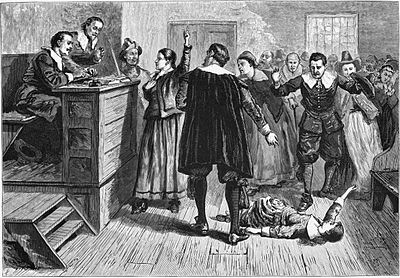A little ice age around the time of the 1692 Salem witch trials led to crop failures and shortages of fish, which put everyone in a mood to find a scapegoat, says a newly resurfaced 2004 Harvard thesis by economist Emily Oster. And who did they find to blame for climate weirdness? We’ll give you a hint: She weighed the same as a duck.
When crops failed, “people would have searched for a scapegoat in the face of deadly changes in weather patterns,” Oster wrote. Thus, desperate people traced their troubles to unpopular neighbors and outcasts allied to the devil.
In other words, lacking an explanation for climate-related woes, Salem locals pointed fingers at witches. And then they pointed other things at them, like burning torches.
Alan Burke at the Salem News notes that other historians remain unconvinced.
Danvers archivist Dick Trask, an expert on the era, was not surprised to hear the climate-change theory. Nor was he convinced. He’s heard all of the explanations and says, “These theories tell us more about the present than they do about the past.”
But whatever, he’s probably a witch.




